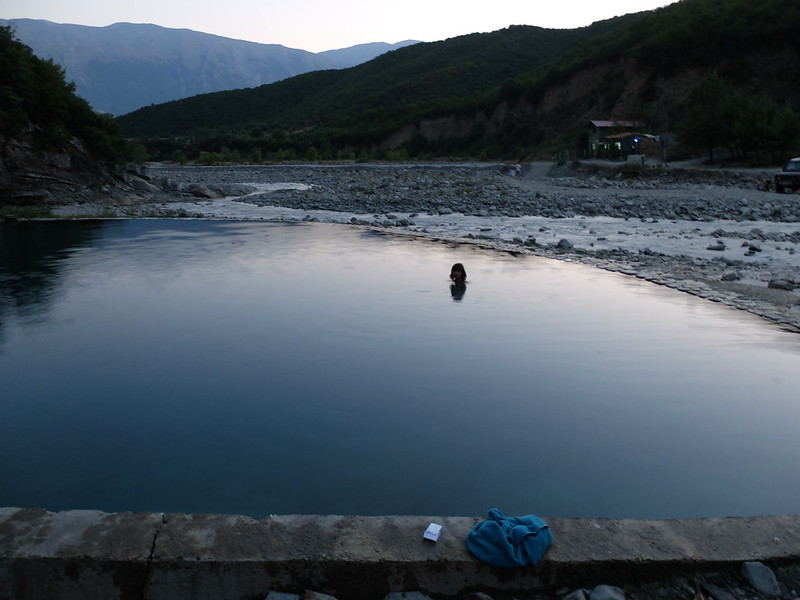
As part of the event, a study on the geothermal resources assessment of Albania done by Nevton Kodhelaj from the Polytechnic University of Tirana was presented and discussed. The full report can be accessed via this link.
Geothermal regions in Albania
Albania has three major geothermal regions:
The Kruja geothermal zone extends over 180 kilometers from the Adriatic Sea in the North to the south-eastern area of Albania, all the way to the Konitza area in Greece. The aquifer here is characterized as a karstified neritic carbonate formation with numerous fissures. There are seven hot spring groups connected along the main regional tectonics of the Kruja zone.
Three boreholes have been drilled in the Kruja zone and have been shown to produce hot, mineralized water. Wellhead temperatures in the Tirana-Elbasani zone vary from 60 – 65.5°C. The temperature at the top of the aquifer reaches 80°C in the Kozani-8 borehole.
The Ardenica geothermal zone is located in the coastal area of Albania within the Pre-Adriatic Depression and intercepted by the Vlora-Elbasan-Dibra transversal fault. At least six boreholes have been drilled in this region, intersecting different structures. At the surface, the boreholes discharge waters at temperatures of 32-67°C. Hot water flows into these boreholes from feed zones ranging from depths of 1200 meters (Ard – 3) to 2425 meters (Bub-5).
The Peshkopia geothermal zone is located in the Northeast of Albania, in the Korabi hydrogeologic zone. At a distance of two kilometers east of Peshkopia, water at 43.5°C flows out of a group of thermal springs on a river slope. In the riverbed, outcrops of anhydrides and gypsum are located, also with a big yield of cold mineralized water springs.
Potential for direct-use applications
Given the characteristics of the geothermal resources in Albania, direct-use applications have been proposed. For the Llixha Elbasan hot springs, the study provides a model for the development of a district heating system.
For the Kozani-8 borehole, a system that allows for cascaded use has been proposed. This is made more feasible by the location of the borehole within a village. Thus, a recreational center with a spa, indoor pools, and fitness center is considered to be a viable application. Heat from the geothermal fluids is also envisioned to facilitate the development of a greenhouse and pools for aquaculture.
In the Benja region, eight springs release mineralized water at temperatures of 23 degrees Celsius. This is not very hot but can still offer economic value. Based on the calculations presented by the study, the waters can provide competitive energy for greenhouses, aquaculture, and mineral salts extraction.
Application of UNFC standards
An important part of the geothermal assessment study of Albania is the application of the United Nations Framework Classification for Resources (UNFC) and the United Nations Resource Management System (UNRMS) on the country’s geothermal resources. The adoption of such standards paves the way for an integrated management of resources based on globally established and applicable standards.
The study advises adherence to the guidelines in establishing suitable geological models of geothermal aquifers, and to perform comprehensive assessments to evaluate their potential for further development. In addition, the study highlights that conducting Environmental and Social Impact Assessment (ESIA) studies and consulting with stakeholders is crucial for the project’s socio-economic feasibility. The document concludes that to further advance geothermal utilization in Albania, efforts can be made to improve capacity, transfer technology, and disseminate knowledge.
Experts representing the Central American Integration System (SICA) provided inputs on the application of UNFC for geothermal energy, with specific case studies from El Salvador and Costa Rica.